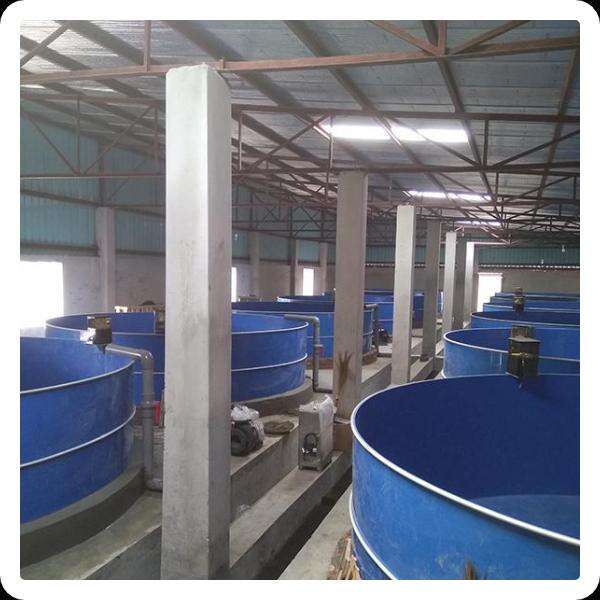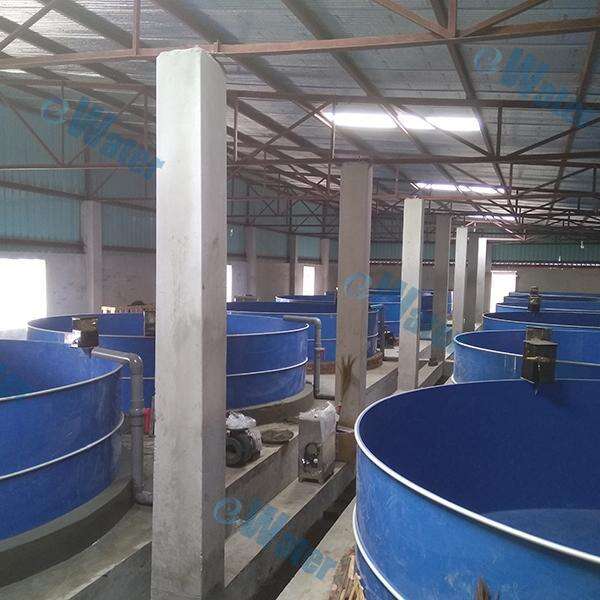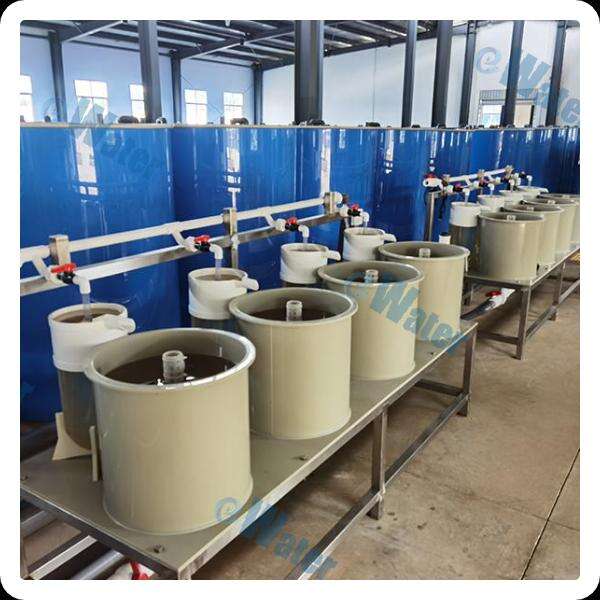تربية الأسماك هي ممارسة صيد ورعاية الأسماك في الأحياء المائية، وهي نوع من الأعمال التجارية التي تهتم بنمو وتربية الحيوانات البحرية. تخيل أن الأحياء المائية مشابهة للمزرعة، ولكن بدلاً من زراعة النباتات أو تربية الماشية على الأرض، يقوم الناس بزراعة الأسماك في الماء. الفوائد من تربية الأسماك: هناك العديد من الجوانب الإيجابية لها، وعلى الرغم من الجانب السلبي يمكن القول أيضًا. سنغطي المزايا والعيوب لتربية الأسماك، ومساهمتها في توفير الغذاء للجميع وكذلك الطرق الجديدة التي يمكن استخدامها لتحسينها. هذا المقال يقدم لكم بفخر بواسطة EWater، المكتب الذي يضمن سلامة المياه للأسماك.
الفائدة المحتملة الثانية هي أن تربية الأسماك، إذا تم القيام بها بشكل مسؤول، يمكن أن تمنع الصيد الجائر الزائد. يحدث الصيد الجائر عندما يتم اصطياد عدد كبير جدًا من الأسماك من المحيطات بحيث لا تستطيع المجموعات إعادة التشكل، مما يؤثر سلبًا على صحة النظم البيئية بشكل عام. يمكن للصيد الجائر أيضًا أن يقلل بشكل كبير من عدد الأسماك المتبقية في المياه، مما يؤثر على الحيوانات التي تعتمد عليها كغذاء. الأقحوان المائي: يمكن تربية جميع الأسماك في مزارع الأقحوان المائي حيث لا تحتاج إلى الاعتماد على المحيطات. وفي الوقت نفسه، يعني هذا أننا يمكن أن نأكل السمك ونضمن استدامة صيد هذه الأنواع في بيئتها الطبيعية. لكن تربية الأسماك قد تكون سيئة أيضًا إذا تم القيام بها بتهور وعدم اهتمام. فنفايات الأسماك تلوث المياه وتضر الكائنات الأخرى القاطنة فيها. كما أن بعض مزارع الأسماك تضيف مواد كيميائية وأدوية لحفظ الأسماك من الأمراض. قد تساعد هذه الأشياء الأسماك، لكنها قد تضر أيضًا بالبيئة وتؤثر على الحيوانات القاطنة فيها أو حول تلك المنطقة المائية.
على مر السنين، تحسنت تربية الأسماك بشكل كبير. كانت تربية الأسماك في السابق شكلًا بسيطًا من الإنتاج. لكن اليوم هناك العديد من الطرق التي يمكنك بها العناية بصحة وقدرة نمو أسماكك. قلة من مزارع الأسماك تطعم أسماكها بأغذية خاصة جدًا، مما يجعلها تنمو بشكل أسرع وأكثر جمالاً. هذه الأغذية الخاصة يمكن أن توفر العناصر الغذائية اللازمة لكي تنضج وتزدهر الأسماك. بعضهم يستخدم تقنيات عالية مثل eWater نظام تربية الأحياء المائية لمزرعة الأسماك لضمان أن تكون الأسماك صحية بما يكفي عن طريق الحفاظ على مياهها نظيفة وواضحة. وبعض المزارع وحتى تستخدم التحول الجيني، حيث تقوم بتغيير الجينات الوراثية للأسماك لمقاومة الأمراض. يمكن لهذه الإجراءات المتقدمة أن تساعد في نمو النظام البيئي البحري وتقديم أسماك خالية من الأمراض للاستهلاك البشري.

تربية الأسماك ضرورية في جميع أنحاء العالم لتوفير الغذاء للناس. وفي العديد من الأماكن، وخاصة في الدول النامية، يعتبر السمك مصدر غذاء رئيسي. لكن الصيد الجائر يعني أنه لا يوجد ما يكفي من الأسماك في البرية لكي يستهلكها الناس. بهذه الطريقة، يمكننا تربية الأسماك بطريقة مضمونة، وعدم الاعتماد بشكل كامل على السكان البرية. هذا ليتمكّن من الحد من الجوع وانعدام الأمن الغذائي. لضمان أن الجميع لديهم طعام جيد للأكل، حتى عندما يأتي الوقت الذي لا نستطيع فيه صيد الأسماك البرية. وللمجتمعات، eWater نظام تربية الأحياء المائية لمزرعة الأسماك أيضًا يمكن أن توفر فرص عمل للأشخاص ودخلًا للعائلات.

في بعض الدول، يمكن أن يكون إنشاء مزارع الأسماك عقبة أيضًا، حيث قد لا تتوفر الموارد أو البنية التحتية اللازمة لدعم هذا النوع من المزارع. وبالمثل، يمكن أن يشكل ذلك حاجزًا أمام العديد من الراغبين في الدخول إلى مجال الزراعة. ومع ذلك، توجد حلول لهذه المشكلة. يمكنك تطوير النموذج باستخدام الموارد المحلية المتاحة لضمان بدء مزارع الأسماك بطريقة مستدامة. بمعنى آخر، استخدام ما هو محلي لديهم - المواد الخام ورأس المال البشري المتاح للزراعة القريبة. تقديم التدريب والدعم لتعليم الناس كيفية إدارة مزارع الأسماك بشكل أفضل هو طريقة أخرى. عندما تعمل المجتمعات معًا لمشاركة أفضل الأفكار، يمكننا جميعًا مواجهة هذه التحديات وإنشاء مزارع أسماك ستفيد الجميع.

من خلال استخدام التكنولوجيا الجديدة، ستحسن معايير الزراعة وتكون أكثر رعاية. مثال على ذلك هو استخدام الطاقة الشمسية في بعض مزارع الأسماك. إنها طاقة نظيفة ومتجددة وتساعد أيضًا في تقليل التلوث. يتم استخدام الأكوaponics (زراعة الأسماك والخضروات معًا) من قبل بعض الأشخاص. هذه التقنية لا تنتج الأسماك فقط ولكنها تزرع النباتات أيضًا، مما يجعلها طريقة فعالة للغاية لإدارة الموارد. وفي إحدى هذه الحلول، تقوم بعض المزارع بإعادة استخدام المياه أو النفايات لتكون أكثر لطفًا على البيئة. eWater أنظمة تربية الأحياء المائية لزراعة الأسماك يجعلهم يستخدمون الماء والعناصر الغذائية في دورة، وهو أمر جيد للأرض. التكنولوجيا الجديدة والممارسات المستدامة هي الطريق الصحيح لتربية الأسماك للنمو بشكل أكبر بينما توفر للبشرية غذاء صحي.
مهندسو مزارع الأسماك لتربية الأحياء المائية يسهلون التأهيل والتثبيت في الموقع. نصمم مشاريع RAS بتفاصيل دقيقة للعملاء في الخارج لضمان أن تصميم المبنى الأساسي مستعد لتطوير خطط عملية، بما في ذلك الجداول الزمنية والمتطلبات وأيادي العاملة قبل التثبيت.
تواصل eWater استكشاف تقنيات RAS الجديدة لتقليل استهلاك الطاقة وإنتاجية مزارع الأسماك لتربية الأحياء المائية. تم تسليم 400 مشروع RAS بنجاح عالميًا في 20 سبتمبر 2022.
إي ووتر مورّد رئيسي للزراعة المائية، متخصص في استخدام أنظمة إعادة التدوير للزراعة المائية، يعمل مع العملاء لإيجاد أكثر الحلول المناسبة لمتطلبات مزارع الأسماك.
إي ووتر تنتج معظم معدات RAS داخليًا. في عام 2018، تم تطوير الجيل الثالث من مزارع الأسماك، والجيل الثاني من فواصل البروتين، والجيل الثالث من الأكسجة. نقدم ضمانًا لمدة 3 سنوات ودعمًا فنيًا مدى الحياة للمنتج. حاصل على شهادات ISO/CE منذ عام 2016.
فريق المبيعات المحترف لدينا ينتظر استشارتك.